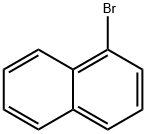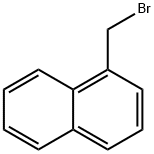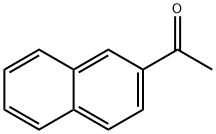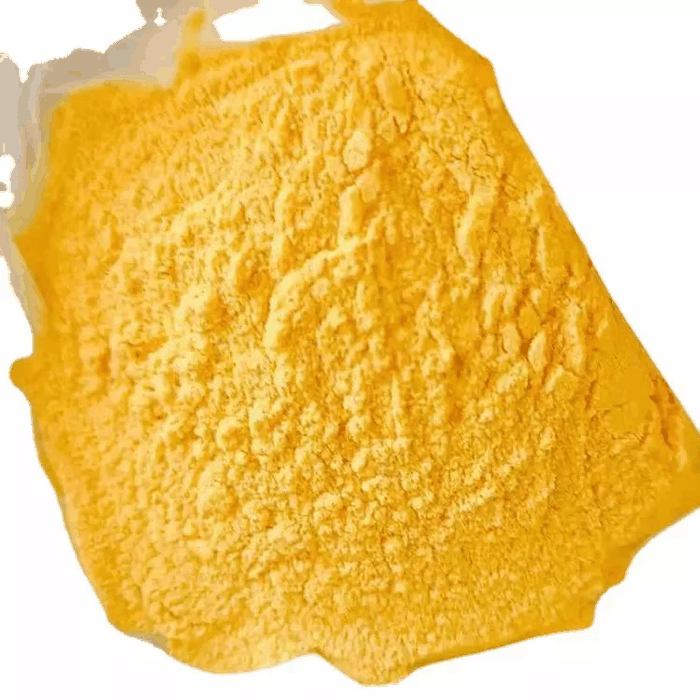2-(Bromomethyl)naphthalene
- CAS NO.:939-26-4
- Empirical Formula: C11H9Br
- Molecular Weight: 221.09
- MDL number: MFCD00004123
- EINECS: 213-359-5
- SAFETY DATA SHEET (SDS)
- Update Date: 2024-11-05 19:05:58

What is 2-(Bromomethyl)naphthalene?
Chemical properties
White to cream solid
The Uses of 2-(Bromomethyl)naphthalene
2-(Bromomethyl)naphthalene (2-BMN) can be employed as a starting material in the synthesis of 2-(fluoromethyl)naphthalene , 2-naphthylmethyl azide , 2-naphthalenecarboxaldehyde , diselenide, bis(2-naphthalenylmethyl) , 1H-1,2,3-triazole, 4,4′-(1,4-phenylene)bis[1-(2-naphthalenylmethyl).
The Uses of 2-(Bromomethyl)naphthalene
It is an important raw material and intermediate used in organic synthesis, pharmaceuticals, agrochemicals and dyestuff.
Purification Methods
Dissolve the bromo compound in toluene, wash it with saturated aqueous NaHCO3, dry (Mg SO4), evaporate, fractionally distil the residue and recrystallise the solidified distillate from EtOH. [Chapman & Williams J Chem Soc 5044, 1952, Bergmann & Szmuszkovicz Bull Soc Chim Fr 20 566 1953, Beilstein 5 IV 1698.]
Properties of 2-(Bromomethyl)naphthalene
| Melting point: | 51-54 °C(lit.) |
| Boiling point: | 213 °C100 mm Hg(lit.) |
| Density | 1.3971 (rough estimate) |
| refractive index | 1.6411 (estimate) |
| Flash point: | >230 °F |
| storage temp. | 2-8°C |
| solubility | Chloroform (Sparingly), Ethyl Acetate (Very Slightly) |
| form | Fine Crystalline Powder |
| color | Slightly yellow to light beige |
| Water Solubility | Soluble in water (reacts), and chloroform. |
| BRN | 636546 |
| CAS DataBase Reference | 939-26-4(CAS DataBase Reference) |
| NIST Chemistry Reference | Naphthalene, 2-(bromomethyl)-(939-26-4) |
Safety information for 2-(Bromomethyl)naphthalene
| Signal word | Danger |
| Pictogram(s) |
 Corrosion Corrosives GHS05  Exclamation Mark Irritant GHS07 |
| GHS Hazard Statements |
H314:Skin corrosion/irritation H317:Sensitisation, Skin |
| Precautionary Statement Codes |
P260:Do not breathe dust/fume/gas/mist/vapours/spray. P272:Contaminated work clothing should not be allowed out of the workplace. P280:Wear protective gloves/protective clothing/eye protection/face protection. P303+P361+P353:IF ON SKIN (or hair): Remove/Take off Immediately all contaminated clothing. Rinse SKIN with water/shower. P305+P351+P338:IF IN EYES: Rinse cautiously with water for several minutes. Remove contact lenses, if present and easy to do. Continuerinsing. |
Computed Descriptors for 2-(Bromomethyl)naphthalene
New Products
Tert-butyl bis(2-chloroethyl)carbamate (S)-3-Aminobutanenitrile hydrochloride N-Boc-D-alaninol N-BOC-D/L-ALANINOL N-octanoyl benzotriazole 4-Hydrazinobenzoic acid 3,4-Dibenzyloxybenzaldehyde Electrolytic Iron Powder 1,1’-CARBONYLDIIMIDAZOLE R-2-BENZYLOXY PROPIONIC ACID 4-HYDROXY BENZYL ALCOHOL 1,1’-CARBONYLDI (1,2-4 TRIAZOLE) S-2-CHLORO PROPIONIC ACID (2-Hydroxyphenyl)acetonitrile 4-Bromopyrazole 5-BROMO-2CYANO PYRIDINE 5,6-Dimethoxyindanone 5-broMo-2-chloro-N-cyclopentylpyriMidin-4-aMine 3-(Hydroxymethyl)benzoate N-Boc-2-chloroethylamine 1-Bromo-2-methoxy-3-nitrobenzene N-Methyl-3-cyclopenten-1-amine 2-Bromo-3-hydroxybenzaldehyde 1H-indazole-5-carboxamideRelated products of tetrahydrofuran








You may like
-
 939-26-4 2-(bromo methyl)napthalene 98%View Details
939-26-4 2-(bromo methyl)napthalene 98%View Details
939-26-4 -
 2-(Bromomethyl)naphthalene CAS 939-26-4View Details
2-(Bromomethyl)naphthalene CAS 939-26-4View Details
939-26-4 -
 2-(Bromomethyl)naphthalene CAS 939-26-4View Details
2-(Bromomethyl)naphthalene CAS 939-26-4View Details
939-26-4 -
 7441-43-2 98%View Details
7441-43-2 98%View Details
7441-43-2 -
 1260741-78-3 6-Bromo-3-iodo-1-methyl-1H-indazole 98%View Details
1260741-78-3 6-Bromo-3-iodo-1-methyl-1H-indazole 98%View Details
1260741-78-3 -
 4-bromo-3,5-dimethylbenzenesulfonyl chloride 1581266-79-6 98%View Details
4-bromo-3,5-dimethylbenzenesulfonyl chloride 1581266-79-6 98%View Details
1581266-79-6 -
 2490430-37-8 98%View Details
2490430-37-8 98%View Details
2490430-37-8 -
 N-(5-Amino-2-methylphenyl)acetamide 5434-30-0 98%View Details
N-(5-Amino-2-methylphenyl)acetamide 5434-30-0 98%View Details
5434-30-0